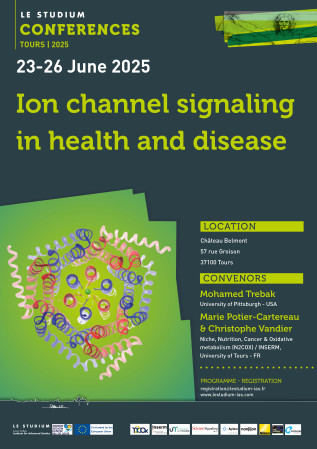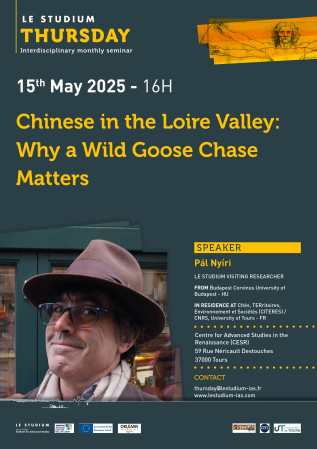In this study, we tackled the challenge of developing modulatory antibodies against G protein-coupled receptors, with a specific focus on the follicle-stimulating hormone receptor (FSHR), a pivotal regulator of reproduction. Leveraging variable domains of heavy chain-only antibodies (VHHs), we constructed two immune VHH libraries and implemented multiplexed phage display techniques. Our methodology integrated Multiplexed Phage Display, High-Throughput Sequencing, and Functional Assays to identify modulatory VHHs targeting FSHR. Following library construction, next-generation sequencing identified 34 clusters of specifically enriched sequences. These sequences underwent functional assessment in a primary screen based on a cAMP response element (CRE)-dependent reporter gene assay. Impressively, 23 VHHs displayed either negative or positive modulation of FSH-induced responses, indicating a high success rate for the multiplexed strategy. Subsequently, we focused on the largest identified cluster, PRC1, which exhibited positive modulation of FSH action. We provided evidence that PRC1 specifically binds to human FSHR and the FSHR/FSH complex, enhancing FSH-induced cAMP production and Gs recruitment. In conclusion, our study showcases an improved selection strategy that effectively identifies functionally active VHHs and can be adapted to target other challenging membrane receptors. Notably, this investigation led to the discovery of PRC1, the first potential positive modulator VHH reported for the human FSHR.
The present study was conducted to elucidate the connections of modern groundwater pollution to specific munitions materials used and destroyed during and after World War I (WWI). Large quantities of unexploded munitions are still present in the tunnels and soils of former battlefields. We performed analyses of the isotopic compositions of nitroaromatics, nitrate, and perchlorate in samples of munition and contaminated groundwater collected at three sites along the WWI battlefront in northern France. The isotopic data from these samples indicates a direct connection between the groundwater contamination and the WWI munitions. Potential adverse effects on public health from munitions compounds in groundwater indicate an urgent need for further evaluation of the continuing presence of legacy WWI munitions and their contribution to chronic groundwater pollution in the region.
Ravenala or Traveller's Tree (STRELITZIACEAE) and Litchi (SAPINDACEAE) are two species widely distributed in Madagascar. Particularly, on the one hand, the Litchi fruit is exploited by the local agri-food industry and offers valuable co-products. On the other hand, some part of Ravenala enters the preparation of traditional remedy used by the Malagasy. In this research project focused on the valorisation of plant and co-product, our strategy is to characterize active compounds. Our study consists of developing analytical analysis methods and performing biological tests to identify the active compounds. Since the Institute of Organic and Analytical Chemistry - ICOA UMR7311 is at the cutting edge of technology and has internationally renowned expertise in natural substances for cosmetic uses. Our cooperation can easily meet our objectives. Thus, we would have found in plants widely distributed in Madagascar biosourced ingredients.
Helminth infections represent a major health threat for both humans and animals. In the latter they occur at often very high prevalences and on a global scale. Due to a near complete lack of immuno-prophylactic measures the metaphylactic use of chemotherapeutics i.e. the anthelmintics is the corner stone of worm control since decades. This has resulted in widespread anthelmintic resistance in a range of helminth species. Particularly the gastrointestinal nematodes and amongst them also so called roundworms or ascarids have evolved resistance. This results in an increasing clinical issue as like in horses the Parascaris spp. as well as in pigs or humans the Ascarais spp. often cause considerable clinical symptoms. To improve the sustainable use and provide solutions for the resistance problem it is important to understand the molecular mechanisms of anthelmintic resistance. In the present project the P-glycoprotein (Pgp) based drug efflux as a non-drug target associated mechanism of resistance is being addressed in Parascaris. To this end, the model nematode Caenorhabditis elegans was employed and the specific role of the Pgp3 was examined. The pharmacological profile of a Pgp3 knock out C. elegans line (VC 2338) was established using a panel of anthelmintic compounds and compared with the N2 wildtype strain. Furthermore, the Parascaris Pgp3 coding sequence was injected into the VC2338 to achieve recombinant expression under an intestinal promotor (ges1) as we have done it successfully with another Parascaris Pgp recently. Our results suggest that the Parascaris Pgp3 overexpression in C. elegans interferes with the development of the worm and ongoing investigations attempt to further elucidate the specific role of Pgp3 in the worms homoeostasis.
One of the Asteraceae family's most significant therapeutic herbs is Echinacea purpurea (L.) Moench. The plant is extremely rich in anti inflammatory and antioxidant chemicals, that can be produced effectively and sustainably by in vitro cultures, which are often enhanced by the inclusion of an elicitor in the culture media. In the present investigation, TDZ was effectively utilized to induce E. purpurea callus cultures. Additionally, different melatonin dosages were evaluated for their impact on biomass accumulation, antioxidant capability, and secondary metabolite synthesis. In callus treated with 25μM melatonin, the highest biomass accumulation, total phenolic output, and total flavonoid production were noted. At the same moderate concentration, the best DPPH radical scavenging activity and overall antioxidant capacity were also observed. A positive association was reflected between biomass and these factors. Notable inhibitory effects were seen against pancreatic lipase, alpha-glucosidase, and alpha-amylase after administration with exogenous melatonin, respectively, during the investigation of the potential of callus cultures. These results emphasized the need to look into the existing strategy in more detail in order to identify novel approaches to treating diabetes and obesity. In HPLC analysis, maximum amounts of metabolites resulted at concentrations of 25–50 μM, except amino acids that were associated with the lowest melatonin concentration. Our research showed that TDZ can be used for efficient callus induction of E. purpurea, and elicitation with melatonin may be a useful tactic for boosting biomass, phenolic compounds, flavonoids, and antioxidant capacity as well as numerous enzyme inhibitory effects.
Constitutive activation of ERK1/2 pathway drives the proliferation and survival of many cancer cell types. Therefore, the new approaches, i.e. small molecular weight compounds targeting directly hyperactivated ERK 1/2, are widely explored as anticancer compounds. Recently, new molecules based on a 1,1-dioxido-2,5-dihydrothiophen-3-yl 4-benzenesulfonate scaffold (targeting the FRS domain of ERK2) were synthesized. These new molecules, indicated as compounds 4 and 6, contain modifications of the arylamine substituent at the 4-position of the heterocyclic scaffold. To gain insight into molecular mechanisms of their activity, the study was focused on the exploration of potential interaction of these new compounds with ERK2 by means of in silico study, i.e. molecular docking. The docking procedure was carried out within both substrate docking sites, DRS and FRS, and ATP binding sites, and by means of Molecular Operating Environment (MOE) system. The 4gt3,
high-resolution ERK2 structure available in the Protein Data Bank (RCSB PDB) was chosen for this purpose. The analysis indicated that both compounds 4 and 6 bound with similar efficiency within both substrate docking sites, DRS and FRS, but not in the ATP binding site.




